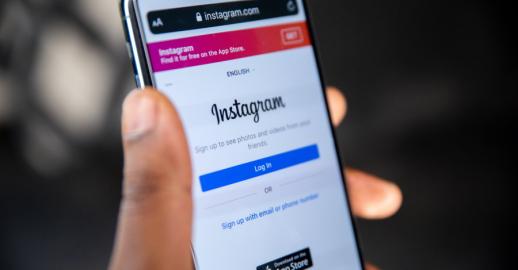Facebook: Are you listening?
17th February 2017
Facebook has recently announced a huge change when it comes to playing videos. In December 2013, Facebook began playing videos automatically on people’s newsfeeds. Now Facebook will play these videos automatically with sound.
Facebook continues to update the way it works, ensuring we see relevant and engaging content that relates to our individual likes and dislikes. This makes it a valuable marketing tool – allowing you to put your brand and message directly in front of the people that matter to your business.
The switch to sound on will certainly make it more difficult to slyly check your Facebook newsfeed, but luckily, the videos will only play with sound if you phone is not on silent (thank goodness for that!) The audible newsfeed will mean you’ll start hearing your videos as you scroll through your feed, with the sound fading in and out as pass through each video.
Whilst this might sound slightly irritating, you might be surprised to ‘hear’ (excuse the pun) that an impressive 70% of viewers left sound on when it was trialled, making it amazing news for advertising.
Research has showed that not only were viewers not bothered about the sound being left on, but it also made them watch the video for longer. This suggests that Facebook has hit the nail on the head with achieving a balance between what viewers wants to see, and what advertisers need to make it worth their investment.
Me being me, you know something anthropological is going to wiggle its way in here sometimes, and I wanted to ask the question of why adding noise to videos is such a great step to take if you want to capture a person’s attention. And perhaps more importantly… if we can already determine what visual elements will attract someone’s attention (think PPC rules and regulations such as capitalisation of letters etc.) then surely, we can do the same with sound?
Unsurprisingly, the noises that initially capture our attention are strictly linked to volume. The pitch, and how loud they are when they end is not important, it’s the initial volume that counts. If you think about it, it makes perfect sense. If you’re trying to get someone’s attention and they aren’t listening, what do you do? You shout to get their attention. What if you’re in an argument and you feel that you aren’t being listened to, that your message isn’t getting across? You might resort to shouting, thinking that volume will make your point heard. (Of course, I wouldn’t advise shouting in an argument at all, but you have to admit, it’s a common enough occurrence for you to understand what I’m trying to say here.)
Perhaps this is where Facebook needs a little nudge. Their new way of including volume is reportedly fading in and out between videos as you scroll through your newsfeed. Well, if it’s volume that’s the clincher, then ‘fading in’ is ultimately not going to be as effective as if it was an initially loud sound. Well, it’s something to think about anyway – perhaps that’s where the balance with the audience has been considered, as I know I’d be less keen on an initial burst of volume when compared to a subtler fade effect.
It’s also worth mentioning the ‘cocktail party effect’. This is the phenomenon of being able to focus your auditory attention on one noise while filtering out a range of other noises, much the same way that someone can focus on a single conversation in a noisy room of a cocktail party. This is all well and good, but first you consider needing to capture the attention of a person initially, before drawing them into a conversation – and a loud noise (i.e. shouting their name) will arguably be the most effective way of doing this. I wanted to mention it though as it puts an emphasis on quality content, when related to marketing at least. It’s not simply good enough to capture the attention of your audience, you need to encourage them to listen and filter out the other visual and audio stimuli on their Facebook feed, thus creating your own ‘cocktail party effect’ with your marketing.
So, with video being a combination of both video and audio stimuli, it’s unsurprising that it’s an effective tool for marketing. When done correctly it can draw us in and keep us there, and this highlights the skill needed by advertisers to make that initial contact, and the importance on quality content to keep us interested.
Undoubtedly, Facebook will continue to update the way they work, and I have no doubt they’re aware of the effect that a loud sound can have on grabbing someone’s attention. And it’s for this reason I’m thankful they decided on a fade in, fade out approach with their videos – arguably done for the benefit of their users, and not for the advertisers. Perhaps they do have their audience’s best interests at heart after all?






